Purple Finches and House Finches can be Challenging to Tell Apart
Now that the weather has turned cold your backyard feeders may be alive with birds. Some of them are quite easy to identify, like a Blue Jay or a male Northern Cardinal. Others may be more of a challenge, especially if they look similar to another species. Two fairly common birds that are tough to tell apart are the House Finch (Haemorhous mexicanus) and the Purple Finch (Haemorhous purpureus), especially the females.
The Two Finch Species Have a Different Distribution
House Finches are native to the south-western United States. These colorful birds were imported by New York pet stores in the 1940s where they were sold as ‘Hollywood Finches’. Some of these birds either escaped or were released by pet store owners, after which they quickly spread throughout the eastern United States. They are present in Delaware year-round. As their name suggests, House Finches are usually found around people and are a fairly common backyard bird.
Purple Finches breed across most of Pennsylvania and north into Canada. They are an ‘irruptive species’. This means they usually spend the winter to our north where they feed on a variety of cone seeds. However, if the cone crop is poor, they flood south in search of food. This winter appears to be an irruption year, as predicted by the Winter Finch Forecast (click on link to read). Flocks of Purple Finches have already been reported throughout Delaware. Purple Finches are less associated with people than House Finches and are more likely to be found in natural areas like woodlots. However, they are also attracted to backyard bird feeders and when the two species feed together it can be confusing. Here are some ways you can tell the two species apart.
Overall Shape
A perched House Finch usually has a distinct, rounded head whereas a Purple Finch tends to have a straighter profile with a smoother transition between the back and head. Purple Finches are also more barrel-chested and have a front-heavy appearance. This often makes them look like they are leaning forward. If you are lucky enough to see them up close, the House Finch has a heavy, rounded beak, while that of the Purple Finch is more pointed.
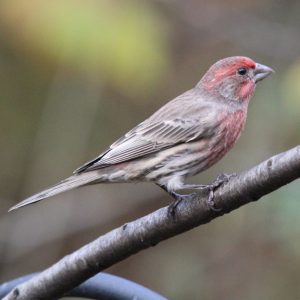
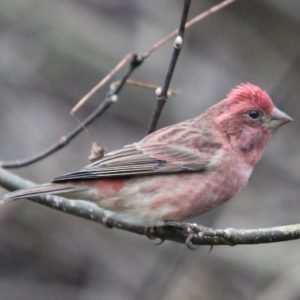
Color and Pattern
Male House Finches present an extra identification challenge because their color can be very variable. This variation is due to the amount of carotenoid pigments they acquire through their diet. Some males are bright red all over their head, breast, back and rump, while other males have just small patches of dull orange in these areas.
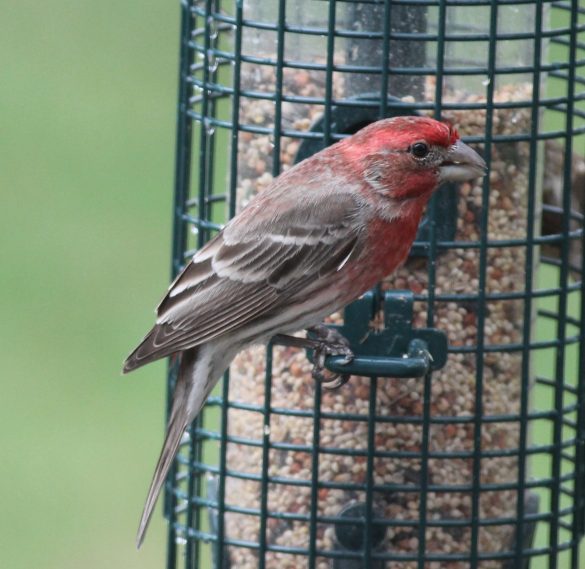
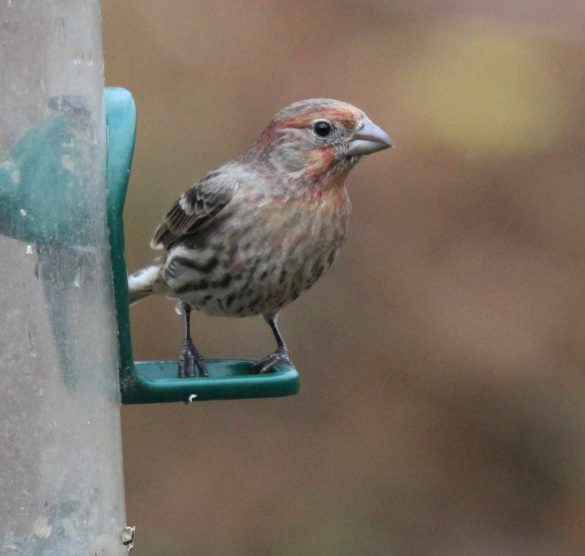
However, old male Purple Finches (those at least one year old) are always brightly colored across their head, breast and rump. The legendary birdwatcher and artist Roger Tory Peterson famously described them as ‘like a sparrow dipped in raspberry juice’! Old male Purple Finches are noticeably more pinkish than the brick-red male House Finch, and their wings are also colorful, whereas House Finch wings are dull brown.
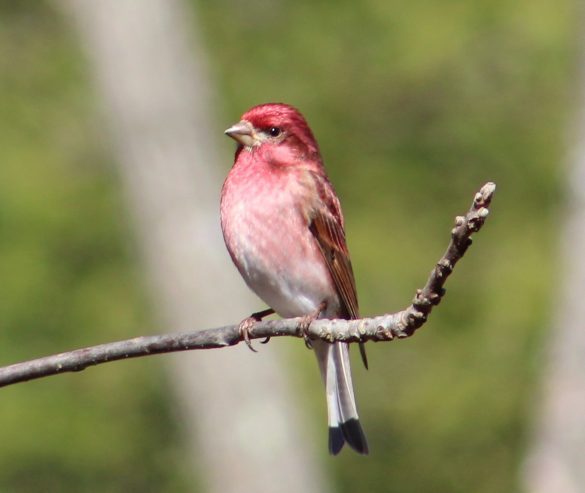
If you see the males from the front or below there are more features to help you clinch the identification. Male House Finches have bold streaking on their sides and belly, whereas male Purple Finches don’t have any streaks and their belly is plain and blizzard white.
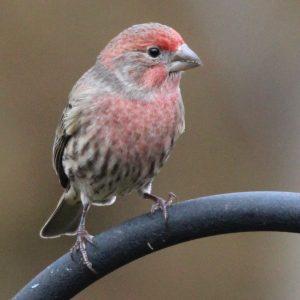
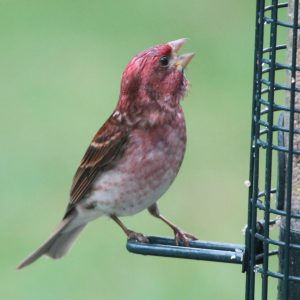
It is harder to distinguish female House Finches from female and young male Purple Finches (males hatched the previous summer) as they are both brown and streaky. However, female House Finches have a plain brown face, whereas female and young male Purple Finches have a broad white stripe above their eye and a dark brown cheek. Female and young male Purple Finches are also more heavily patterned than House Finches and their plumage is darker and more chocolatey-brown. The female House Finch also appears to have a smaller, ‘beady’ eye.
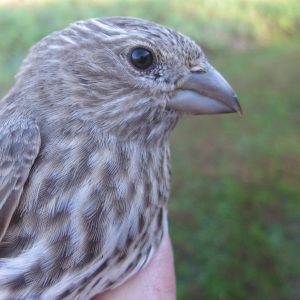
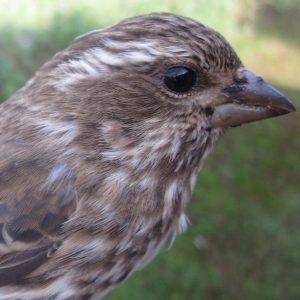
Tail Length and Shape
We collect body measurements from both species handled at our public bird banding station. We have found that Purple Finches are significantly heavier than House Finches (an average of 24.4g versus 21.0g) and have longer wings (83.5mm vs 79.4mm). In contrast, Purple Finches have shorter tails than House Finches (58.9mm vs 63.2mm). These differences are especially useful for identifying birds perched at feeders. House Finch tails extend far beyond their wing tips whereas the wing tips of a Purple Finch reach almost halfway down their tail. House Finch tail feathers are always rounded whereas Purple Finch tail feathers are pointed. Also, the Purple Finch has a more obvious ‘notch’ in their tail because the central feathers are proportionately shorter.
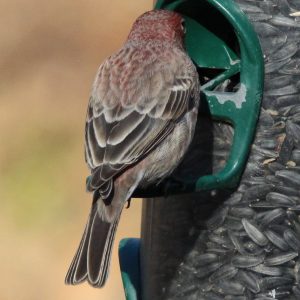
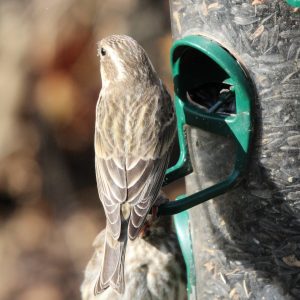
How to Find Purple Finches vs House Finches
One research group has been placing radio transmitters on Purple Finches near Quebec, Canada then following their movements using the Motus animal tracking network (click here to find out more about Motus and how Delaware Nature Society is involved). Amazingly, four of these Quebecker Purple Finches have shown up in our region! Just click on each bird to see a map of its journey: bird 1, bird 2, bird 3, bird 4).
You can enjoy watching both House Finches and Purple Finches at the bird blind at Ashland Nature Center in Hockessin. You can also attract them to your own yard with feeders of black oil sunflower seed (especially platform feeders). Feeders and seed are readily available at local stores like Wild Birds Unlimited. Perhaps now you can have fun identifying these two attractive finches yourself!